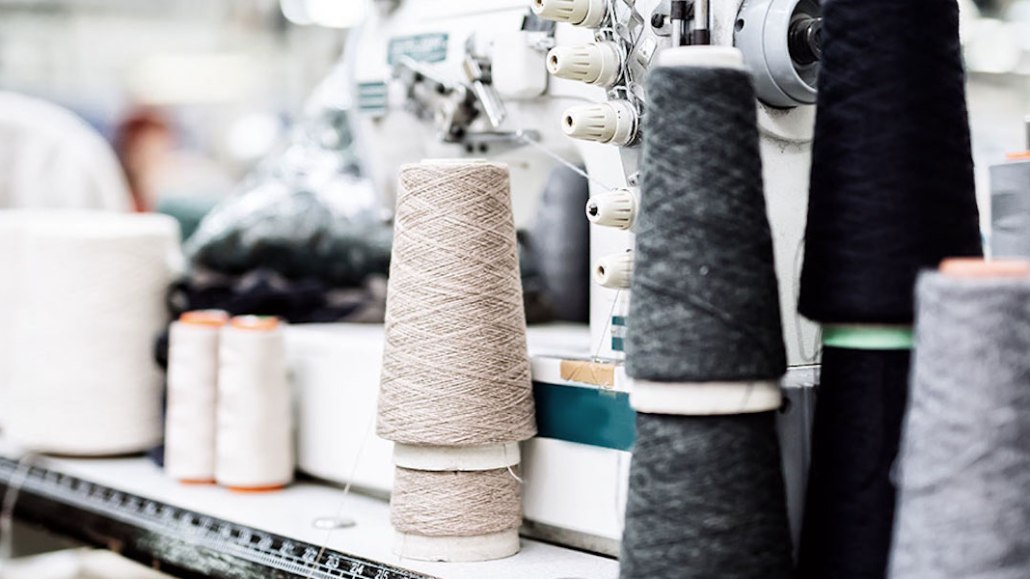Connect with execs from The New York Times, TIME, Dotdash Meredith and many more
Inside the on-demand designer production process that could replace see-now-buy-now

Ever since it became widely accepted that the fashion calendar is broken, the industry hasn’t been able to find a fix-all solution that would bring the release of designer collections in line with changing customer demands. See-now-buy-now, thanks to being a drastic and expensive undertaking, never became the revolutionary movement it was propped up to be.
In its place, the Council of Fashion Designers of America, which owns the rights to the New York Fashion Week schedule, has been exploring solutions that would help designers move faster, enact smarter supply chains, and update production cycles in a way that would minimize lag time between runways and collection releases.
Its most recent move: a partnership with Nineteenth Amendment, a retail platform and production management company that specializes in on-demand manufacturing.
Through the partnership, all CFDA brands — including Calvin Klein, Tory Burch, Vivienne Tam and Michael Kors — will have access to Nineteenth Amendment’s production platform. Through the platform, which carries no inventory, customers can pre-order designer items that are either sold through Nineteenth Amendment’s retail site, the brand’s own website, or through wholesale partners like boutiques and department stores. Once ordered, items are manufactured in one of Nineteenth Amendment’s local U.S. factory partners and shipped within four to six weeks. Currently, about 500 small designers sell through the platform, and the company has a dozen factory partners. To scale with the new CFDA partnership, 60 more factories will be brought onto the production platform as a partner.
“Our opportunity now is to figure out, ‘How do you adjust the supply chain from start to finish?’” said Steven Kolb, president of the CFDA. “Designers are all coming to us with the same problem. There’s no more waiting around to let this sort itself out, because customer behavior isn’t going backwards.”
Amanda Curtis, co-founder and CEO of Nineteenth Amendment, said the company is in the process of onboarding and testing upcoming partnerships with more established brands, as up until now, the company’s bread and butter was helping small designer clientele make their first retail sales. She couldn’t share the names of the designers who are testing the platform yet, but as partnerships come together ahead of February’s New York Fashion Week, designers that do use the platform will be able to sell items directly from the runway, without any inventory hanging overhead.
“What we’ve enabled is see-now-buy-now-make-now,” said Curtis. “There’s no risk in inventory upfront, which is why see-now-buy-now didn’t really work.”
At New York Fashion Week, for instance, those watching a designer’s runway show could view a capsule collection of items available for pre-order on their phones or the web, that the brand has designed specifically for the Nineteenth Amendment platform. If an item is purchased, the manufacturing process is set into motion, including fabric sourcing, purchasing, manufacturing and shipping. Since all items are manufactured in the U.S., turnaround time is guaranteed to take no more than six weeks. During the process, both designers and customers can see a real-time view of the process.
Designers have the option to either turn over their entire production to Nineteenth Amendment or set aside only a small collection of items to be part of on-demand manufacturing. Wholesale partners can sell through the platform, as well, with buyers seeing the sample designs, accounting for less inventory risks.
“New brands, emerging brands, they don’t have to do things the [traditional way],” said Downing. “What you do is this: Present the collection in your showroom to buyers ahead of time, then you do your actual fashion show and presentation in real time, in season. I’m a big believer in in-season shows.”
Curtis, who was a designer before starting Nineteenth Amendment, said that the company has a 7 percent e-commerce return rate, takes 10 percent commission for any piece sold and charges designers $20 a month to use its management platform.
“We started with a proposition for small designers to make retail sales without a huge investment,” said Curtis. “But throughout the industry, big and small, the struggles are exactly the same. All designers are thinking about inventory risks, selling direct to consumer and the lead times of manufacturing over shore. Everything we put in place was to fix all of this.”
More in Marketing

In Graphic Detail: Inside the state of the creator economy industrial complex
The creator economy might have started out as an alternative to traditional media, but is becoming more and more like it as it professionalizes.

Shopify has quietly set boundaries for ‘buy-for-me’ AI bots on merchant sites
The change comes at a time when major retailers like Amazon and Walmart are leaning into agentic AI.

WTF is ‘Google Zero’?
The era of “Google Zero” — industry shorthand for a world where Google keeps users inside its own walls — is here.









